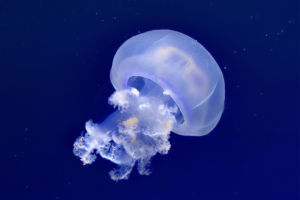Meteors, often referred to as shooting stars, are captivating celestial phenomena that occur when meteoroids, small rocky or metallic objects, enter Earth's atmosphere and create luminous streaks of light as they rapidly burn up due to friction with the air.
These meteoroids, which can range in size from tiny grains of sand to larger objects, are collectively known as meteoroids and share similarities with planets as they orbit the Sun.
Meteor showers are breathtaking events where groups of meteors streak across the night sky, appearing as if they are falling and bursting through the celestial canvas. The point in the sky from which the meteors seem to radiate is called the radiant point of the meteor shower.
Meteor showers are often named after the constellation in which their radiant point lies. For example, the Leonid meteor shower derives its name from the constellation Leo, as its radiant point is situated within this celestial formation.
Meteors themselves do not emit light; instead, they consist of dust particles and small solid masses floating in space. These particles ignite and emit light as they collide with the Earth's atmosphere, owing to their high velocity and the resulting atmospheric friction.
The brightness and size of the resulting fireball, known as the meteor's light region, depend on factors such as the meteoroid's size, velocity, and composition.
As meteors hurtle through the atmosphere at incredibly high speeds, often tens of kilometers per second or faster, the air surrounding them cannot fill the void rapidly enough, causing a powerful shockwave. This shockwave creates the meteor's trail, also known as its tail.
The tail of a meteor is typically bright white or displays a variety of colors due to the dispersion of light as it passes through the atmosphere, resulting in a vibrant display of red, green, blue, and other hues.
The duration of a meteor sighting is usually brief, typically lasting only a few seconds to slightly over ten seconds. Once the meteoroid has completely burned up or exited the atmosphere, the meteoric event concludes.
The intensity of meteor showers can vary, depending on the number and speed of the meteoroids involved. Some showers may feature only a few meteors, while others can showcase hundreds or even thousands, creating a spectacular meteor shower display.
To observe meteor showers effectively, astronomers often seek out observatories or open areas away from light pollution, maximizing their chances of witnessing these awe-inspiring celestial shows.
Meteors and meteor showers are enthralling phenomena within the field of astronomy. Through their observation and study, we gain valuable insights into the universe, deepening our understanding of interstellar matter and the origins of the solar system.
Scientists analyze the composition and structure of meteoroids to unravel their origin and evolutionary processes. Meteoroids may contain organic compounds and other essential chemical components, making them invaluable for studying the origins and development of life.
Meteors and meteor showers offer us glimpses into the wonders of the universe, allowing us to appreciate its beauty and mysteries. Through ongoing observation and scientific investigation, we continue to expand our knowledge and appreciation of the cosmos that surrounds us.


